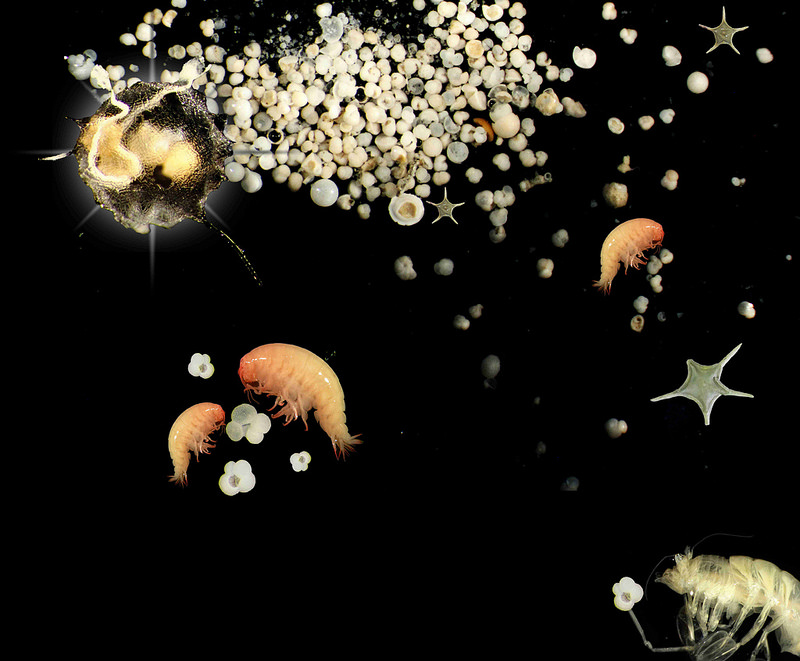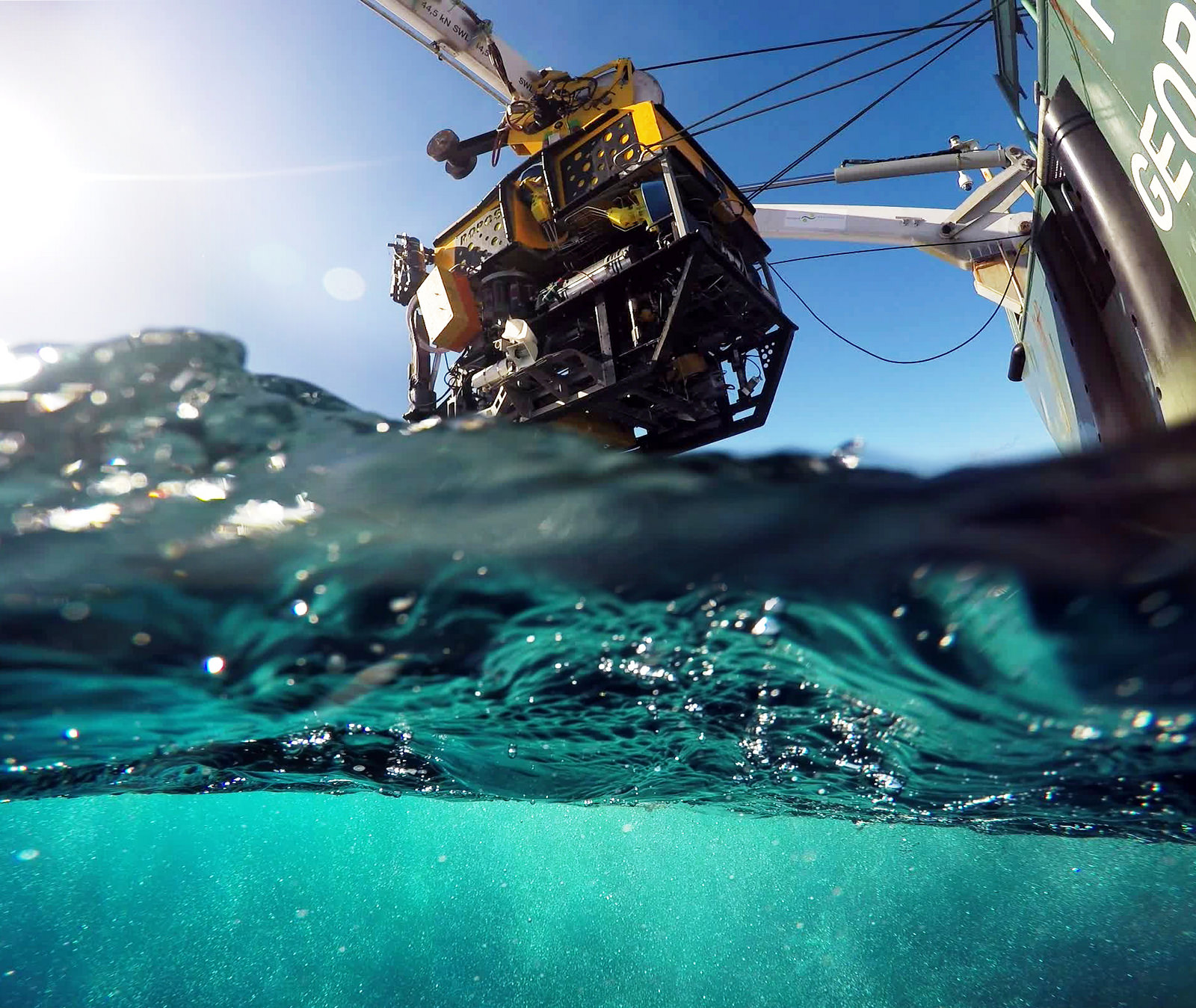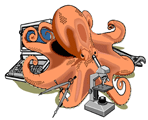
A paper has been published in Research Ideas and Outcomes that presents the topics, ideas and challenges that were addressed in the discussion sessions during the workshop:
Schoening T, Durden J, Preuss I, Branzan Albu A, Purser A, De Smet B, Dominguez-Carrio C, Yesson C, de Jonge D, Lindsay D, Schulz J, Möller K, Beisiegel K, Kuhnz L, Hoeberechts M, Piechaud N, Sharuga S, Treibitz T (2017) Report on the Marine Imaging Workshop 2017. Research Ideas and Outcomes 3: e13820. https://doi.org/10.3897/rio.3.e13820
Program:
| Tuesday - 21.02. | Wednesday - 22.02. | Thursday - 23.02. | |
| 08:30 | Registration | ||
| 09:00 | Opening Remarks | Keynote: Yoav Schechner "Opportunties in distributed imaging through scatter" |
Keynote: Sönke Johnsen "Seeing the underwater world through the eyes of animals" |
| 09:15 | |||
| 09:30 | Keynote: Jules Jaffe "From the Titanic to the tiny: 30 years of inventing underwater imaging systems" |
||
| 09:45 | |||
| 10:00 | Ariell Friedman: An online platform for exploration, management and annotation of georeferenced images & videos | Tim Walles: Comparing in situ imaging profiles from the Mini Deep-Focus Plankton Imager with Camera based ZooProcess analyses of net tows in the LakeLab mesocosms. | |
| 10:15 | Tim Nattkemper: BIIGLE 2.0 - a software platform for collaborative web-based marine image annotation | Klas Ove Möller: Undersampled and underrated? Resolving the small-scale distribution and impact of marine snow and zooplankton on carbon fluxes using towed and stationary imaging systems | |
| 10:30 | Coffee break | ||
| 11:00 | Jennifer Durden: Perspectives in visual imaging for marine biology and ecology: from acquisition to understanding | Jonas Osterloff: Extracting scalar quantities from underwater images - a toolbox for image data from fixed observatorie | Noelie Benoist: A generalised method to estimate megafauna biovolume from seabed photographs |
| 11:15 | Oscar Pizarro: Autonomous Benthic Monitoring Downunder | Fahimeh Farhadifard: Underwater Video Processing: Marine Snow Removal | Nicole Hildebrandt: Optical methods in zooplankton studies - how efficient is LOKI (Lightframe On-sight Key species Investigation) in analyzing Arctic zooplankton communities? |
| 11:30 | Henry Ruhl: Autonomous Ecological Surveying of the Abyss at the Porcupine Abyssal Plain | Kristian Meissner: Fine-Grained Classification of Aquatic Macroinvertebrates | Anthony Bernard: Employing stereo-video imaging techniques to survey the reef associated fishes on the continental shelf of South Africa |
| 11:45 | Fabio De Leo: Seafloor cabled observatory networks: real-time lenses into the deep ocean | Maia Hoeberechts: Automated Fish Counting for Fisheries Science: A Contest | Cherisse Du Preez: Monitoring spatial and temporal variability at hydrothermal vents: a decade of repeated centimeter-scale mapping |
| 12:00 | Ola Oskarsson: Survey ROVs: Groundbreaking Technologies a Game Changer for Deep Sea Base Line Imaging | Timm Schoening: Comparison of automated nodule detection strategies | Session Q&A |
| 12:15 | Lunch break | ||
| 12:45 | Poster session & GEOMAR tours | ||
| 13:15 | Alexandra Branzan Albu: Teaching Underwater Image Processing with Graphical User Interfaces | Derya Akkaynak: Bridging Optical Oceanography and Underwater Computer Vision | Linda Kuhnz: Building an information-rich, insightful marine imagery database: fundamental principles |
| 13:30 | Daniëlle de Jonge: Towed video imagery analysis for monitoring hydrothermal background fauna: efficiency vs. scientific rigor | Michael Kloster: Automated diatom image analysis with SHERPA | Brian Schlining: Next-generation Annotation Management |
| 13:45 | Franzis Althaus - Towed camera imagery and benthic sled catches provide different views of seamount benthic diversity | Daniel Brün: Integrating high performance computing and digital asset management for marine image analysis | Carsten Schirnick: Management of Marine Media Metadata |
| 14:00 | Autun Purser: OFOS Acoustic: A towed imaging and sonar platform for sefloor exploration and impact monitoring - data collection, processing and publication | Daniel Langenkämper: A multi-modal machine learning architecture for adaptive online object recognition in benthic image data | Session Q&A |
| 14:15 | Ines Dumke: Underwater hyperspectral imaging applied on a seabed lander | Matthew Wyatt: Rapid reporting of benthic habitats using deep learning with convolutional neural networks | Break-Out Discussion Session |
| 14:30 | Session Q&A | Session Q&A | |
| 14:45 | Break-Out Discussion Session | Break-Out Discussion Session | |
| 15:00 | |||
| 15:15 | Closing remarks | ||
| 15:30 | |||
| 15:45 | Coffee break | ||
| 16:15 | Tali Treibitz: Advanced Optical Imaging in the Ocean | Kevin Köser - Visual Mapping of the Central DISCOL Experimental Area | |
| 16:30 | Dhugal Lindsay: Ultra-high definition underwater video: real-world testing from capture to archival and annotation | Katleen Robert: ROV Photogrammetry for high resolution mapping of vertical corals reefs | |
| 16:45 | Franzis Althaus: Stereo Deepwater Baited Remote Underwater Stereo-Video System (DeepBRUVS) - proof of concept and future direction | Blair Thornton: Application of Multi-hectare 3D Visual Maps for Deep-sea Megabenthic Survey | |
| 17:00 | Gerhard Herndl: A digital inline holographic microscope for exploration of ocean particles and plankton | Tom Kwasnitschka: Virtual Vents: Photogrammetry of an entire hydrothermal vent field | |
| 17:15 | Session Q&A | Session Q&A | |
| 17:30 | Poster Session & GEOMAR Tours | ||
| 18:30 | Conference Dinner Photo competition award Best poster award |
||
Posters:
- Barbara Niehoff - Using the optical plankton recorder LOKI (Lightframe On-sight Key species Investigations) to elucidate high-resolution vertical distribution patterns of Arctic key zooplankton species in Fram Stait
- Bart De Smet - The megafaunal community associated with polymetallic nodules in the Clarion-Clipperton Fracture Zone (CCZ) using autonomous underwater vehicle (AUV) imagery and the BIGGLE(DIAS) annotation software
- Carlos Dominguez-Carrió - An easy-to-use methodology to quantitatively analyse underwater video footage for ecological studies
- Chris Yesson - Assessing trawling impact in West Greenland using a benthic drop camera.
- Claudius Zelenka - Blind Deconvolution on Underwater Images for Gas Bubble Measurement
- David Clare - Seabed imagery as a tool to monitor habitats and species of conservation importance: The Manacles MCZ as a case study
- David Price - Unravelling the secretive behaviour of Lophelia pertusa
- Elena Rybakova - Megabenthic communities of central Arctic in relation to environmental and sediment parameters: the results of image observation
- Erik Simon-Lledo - Megafauna community patterns related to terrain variations in the abyssal North Pacific
- Felipe Porfírio - Effects of NE Pacific high-temperature anomalies ("The Warm Blob") on subtidal rockyshore benthic communities using real time still imagery from a cabled observatory network.
- Philipp Neitzel - PELAGIOS: a novel ocean observation instrument to characterize pelagic fauna
- Jan Schulz - Small scale assessment of copepod epibionts with the Lightframe On-sight Keyspecies Investigation system (LOKI) in the Norwegian Sognefjord
- Jennifer Durden - Improving the estimation of deep-sea megabenthos biomass: dimension to wet weight conversions for abyssal invertebrates
- Jessica Craig: A 5-year time-lapse study of bioturbation activity in a deep-water oil province (SE Atlantic, 1400 m water depth)
- Jorge Fontes - Marine ecology and conservation with "vision"
- Klaas Gerdes - Using 3D modelling to reconstruct a chimney complex of the newly discovered Pelagia hydrothermal vent field: The first vent field within the active spreading axis along the southeast Indian Ridge
- Kolja Beisiegel - Benthic imagery as a cost-efficient tool for mapping and monitoring of fragile epibenthic hard-bottom communities in the MPAs of the Baltic Sea
- Laura Uusitalo - Semi-automatic classification of zooplankton in the northern Baltic Sea
- Marc Picheral - ECOTAXA, a web based application for collaborating on large plankton image datasets.
- Markus Diesing - Application of Geographic Object-Based Image Analysis to seabed imagery: the way forward?
- Michael Kloster - Automated diatom image analysis with SHERPA
- Michael Kloster - Findings on morphological variation of Fragilariopsis kerguelensis between glacial and interglacial periods
- Mike Nelson - A treasure-trove of imagery - open access seabed data from UK offshore waters
- Nick Mortimer - Improving image area estimation from CSIRO's Marine National Facility Deep Towed Camera System.
- Nils Erik Jørgensen - How to create orthomosaic from the seabed
- Nils Piechaud - Description of a deep sea sponge aggregation off Rockall Bank from Autonomous Underwater Vehicle images
- Gary Robinson & Ross Griffin - Assessing Fish and Motile Fauna around Offshore Windfarms Using Stereo Baited Video - Thoughts on Future Development
- Gary Robinson & Ross Griffin - Mapping Marine Habitats and Species from Above
- Sergey Galkin - Megafauna of the Bering Sea slope based on observations and imaging from ROV "Comanche"
- Sophia Schillai - AUV photographic surveys in complex terrains - Quantifying Vehicle Risk and Mission Success
- Stephanie Sharuga - Using Telepresence and Marine Imagery for Ocean Exploration, Education, and Outreach - Perspectives from a Scientist Ashore
- Tim Dolereit - Calibration of Shared Flat Refractive Stereo Systems
Photo competition
Congratulations to the three photo competition winners: Sergey Galkin: "Deep-sea octopus in his own garden" (Marine Natural Environment) |
 Noelie Benoist: "Chaos in the deep sea" (Marine Art) |
 Cherisse Du Preez: "Beautiful day for a quick dip" (Human Activities in the Marine Environment) |
Sponsors
The Marine Imaging Workshop 2017 was sponsored by:







Organisation
Scientific organising committee: Timm Schoening (GEOMAR, Germany), Jennifer Durden (NOCS, UK), Franzis Althaus (CSIRO, Australia), David Bowden (NIWA, New Zealand), Daphne Cuvelier (UAC, Portugal), Fabio De Leo (ONC, Canada), Linda Kuhnz (MBARI, USA), Dhugal Lindsay (JAMSTEC, Japan), Oscar Pizarro (ACFR, Australia), Tali Treibitz (Uni Haifa, Israel), Brian Bett (NOCS, UK), Tim W. Nattkemper (Uni Bielefeld, Germany)Local organising committee: Inken Preuss, Hayley Reid, Anne Peukert, Florian Gausepohl, Timm Schoening